Understanding Bipolar Disorder
Learn About Bipolar Disorder
Bipolar disorder is a serious mental illness that can significantly disrupt a person’s life. Individuals who struggle with bipolar disorder may experience dramatic shifts in their mood, activity, and energy. These fluctuations can impair a person’s ability to meet his or her responsibilities in school and at work, compromise his or her efforts to maintain healthy interpersonal relationships, and otherwise undermine his or her attempts to pursue a productive and satisfying future.
There are three main types of bipolar disorder: bipolar I disorder, bipolar II disorder, and cyclothymic disorder.
- Bipolar I disorder is characterized by dramatic shifts in mood with at least one manic episode. People who have bipolar I disorder may also experience hypomanic and major depressive episodes.
- Bipolar II disorder is characterized by recurring mood episodes that consist of one or more major depressive episodes and at least one hypomanic episode.
- Cyclothymic disorder involves fluctuating mood disturbances involving several distinct periods of hypomanic symptoms and depressive symptoms over a period of two years for adults.
Any form of untreated bipolar disorder can have a profoundly negative impact on a person’s life. However, with effective professional intervention, adults who have been diagnosed with bipolar disorder can learn how to manage their symptoms and achieve a much improved quality of life.
Statistics
Statistics for Bipolar Disorder
According to the Depression and Bipolar Support Alliance (DBSA), about 5.7 million adults in the United States meet the criteria for bipolar disorder. Unfortunately, studies suggest that less than half of people who have bipolar disorder are currently receiving mental health treatment.
Causes & Risks
Causes & Risk Factors of Bipolar Disorder
Research indicates that several factors can play a role in determining whether or not a person will develop bipolar disorder. These genetic and environmental factors can influence the onset and severity of the symptoms that may be experienced by a person who is predisposed to develop bipolar disorder.
Genetic: Studies suggest a strong genetic connection with bipolar disorder. For example, people whose parents or siblings suffer from bipolar II disorder have a 40% chance of developing the same form of the disorder themselves. If a parent or sibling has bipolar I disorder, the risk of developing bipolar II disorder is about 22%. Having an identical twin with bipolar disorder can increase a person’s risk of developing the disease to as much as 70%.
Environmental: Environmental influences such as exposure to stressors can trigger the onset of symptoms or increase their severity in people who are genetically predisposed to develop bipolar disorder. For example, people whose parents engaged in substance abuse, experienced mood swings, or otherwise contributed to a chaotic home life may be at increased risk for manifesting symptoms of bipolar disorder. Exposure to trauma can also precipitate the onset of symptoms of bipolar disorder.
Risk Factors:
- Family history of bipolar disorder or other mental health issues
- Having a brain with a smaller than normal prefrontal cortex
- History of being abused or neglected
- Engaging in substance abuse
- Experiencing or witnessing a traumatic event
- Having problems related to the sleep-wake cycle
Signs and Symptoms
Signs & Symptoms of Bipolar Disorder
Symptoms of bipolar disorder symptoms may vary depending upon several factors, but the following are among the more common signs that may indicate the presence of one of the forms of bipolar disorder:
Behavioral symptoms:
- Rapid speech
- Engaging in reckless behaviors
- Frequent absences from work or school
- Restlessness and fidgeting
- Manipulative behaviors
- Jumping from topic to topic in conversations
- Tics (vocal and/or motor)
- Expressions of extreme self-confidence
- Expressions of self-loathing
- Self-harm
Physical symptoms:
- Excessive energy
- Extreme fatigue
- Insomnia and hypersomnia
- Heightened sexual arousal
- Grinding teeth
- Drastic changes in appetite and weight
Cognitive symptoms:
- Memory problems
- Racing thoughts
- Inability to concentrate or focus
- Impulsivity
- Paranoia
- Nightmares and night terrors
- Impaired judgment
- Delusions
Psychosocial symptoms:
- Drastic mood shifts from elation to rage
- Emotional detachment
- Extreme excitability
- Low self-esteem
- Inflated self-esteem
- Alternating elation and hopelessness
- Heightened levels of anxiety
- Suicidal ideation
Effects
Effects of Bipolar Disorder
Untreated bipolar disorder can cause lasting damage to a person’s physical, mental, emotional, and/or social well-being, including the following negative outcomes and effects:
- Family discord, including separation, divorce, and loss of child custody
- Strained or ruined friendships
- Decline in academic performance
- Poor job performance
- Job loss and unemployment
- Abuse of alcohol and/or other drugs
- Development or worsening of other mental health problems
- Physical harm related to impulsive and/or reckless behaviors
- Legal problems
- Sexually transmitted infections due to engaging in risky sexual behaviors
- Self-harm
- Suicidal ideation
Co-Occurring Disorders
Bipolar Disorder and Co-Occurring Disorders
In many cases, people who have bipolar disorder are also dealing with another mental health problem. The following are examples of mental health conditions that have been known to co-occur in individuals who have also been diagnosed with bipolar disorder:
- Anxiety disorders
- Substance use disorders
- Attention-deficit/hyperactivity disorder (ADHD)
- Binge-eating disorder
- Obsessive-compulsive disorder (OCD)
- Post-traumatic stress disorder (PTSD)











